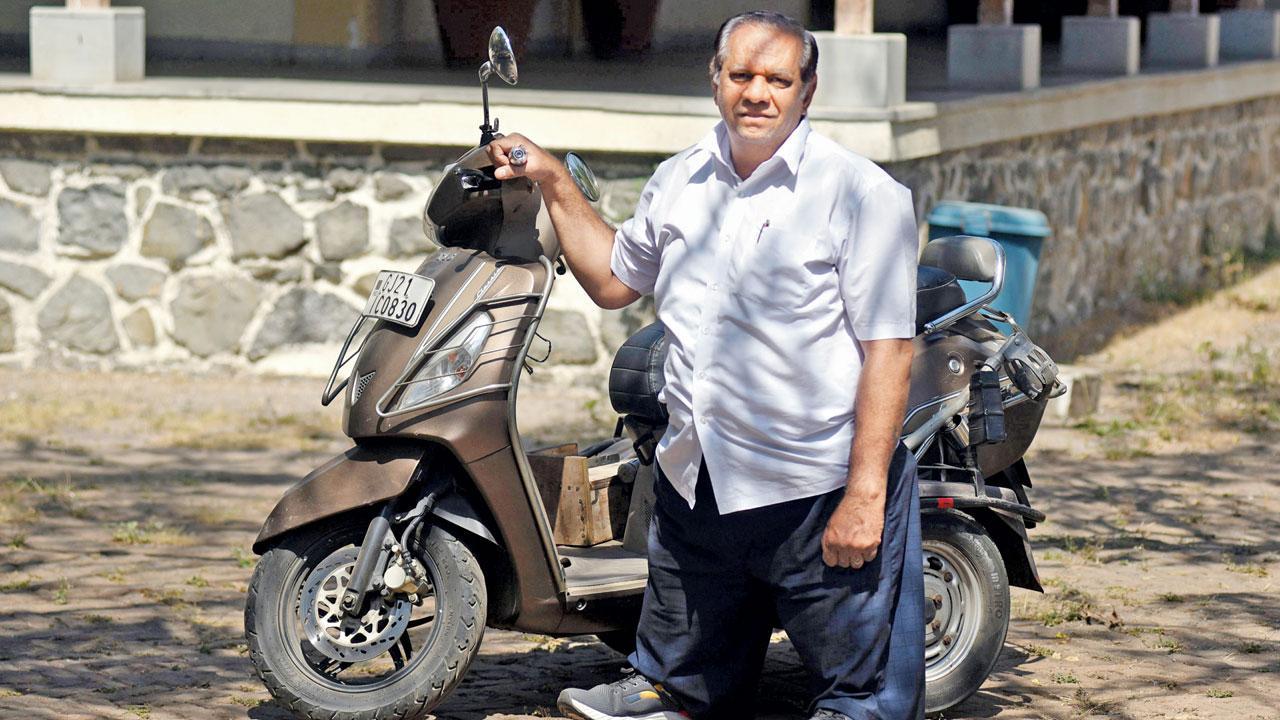Home / Mumbai / Mumbai News / Article /
Mumbai: ‘Leave the past behind, but keep the lessons’
Updated On: 11 March, 2024 06:50 AM IST | Mumbai | Rajendra B. Aklekar
Braveheart individuals who have overcome disabilities they suffered in freak mishaps or terror attacks have encouraging words for Palghar shark attack victim
Listen to this article :

Rail accident survivor Aspi Sepoy and his three-wheeler at Udvada, Gujarat. Pic/Sameer Markande
As thirty-four-year-old Hitesh Gowari, a resident of the hamlet Dongarpada in Palghar district, grapples with the life-altering loss of his left leg in a recent bull shark attack, mid-day presents stories of how in the face of adversity, the human spirit’s resilience shines brightest. Here are four individuals who, following accidents, have emerged not just as survivors but as victors.
Chirag Chauhan




